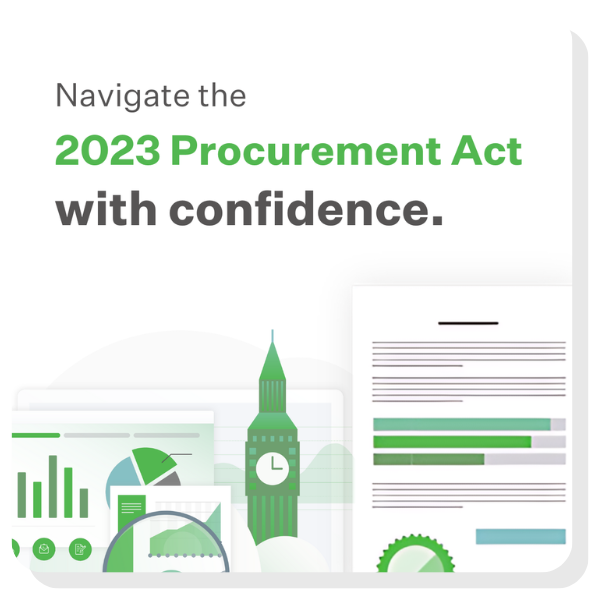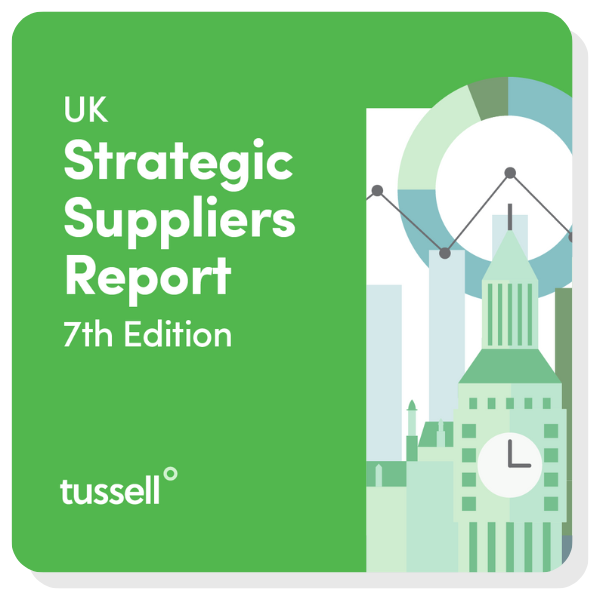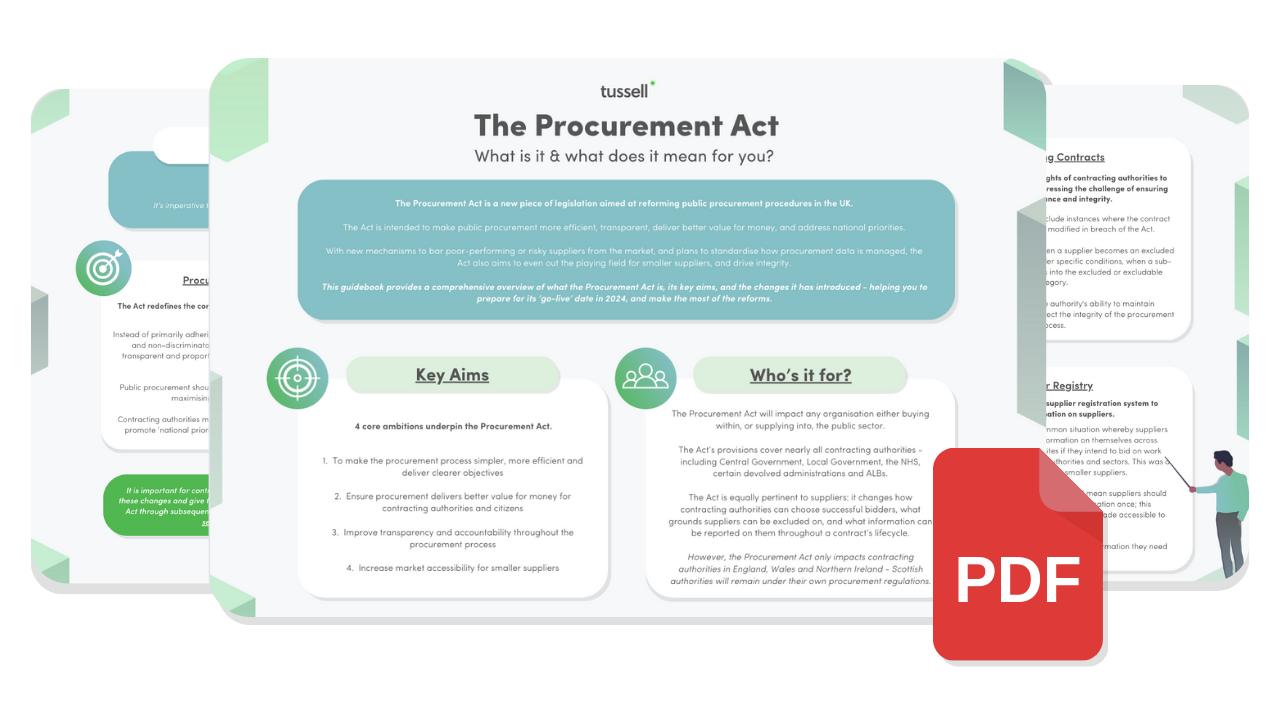Contents:
- Introduction
- The Defence Procurement Tracker
- MOD procurement in 5 charts
- What is the data telling us?
- Notable MOD contracts
- Methodology
Last updated: 10th April 2025
Introduction
With fresh pledges to increase defence spending and growing geopolitical tensions worldwide, investment in the UK's military capabilities is ramping up.
At Tussell, we wanted to move beyond the headlines and bring clarity to the public procurement driving this key sector.
Introducing: Tussell's Defence Procurement Tracker.
Inspired by our other live tracker measuring public sector AI procurement contracts, this new Tracker draws on data from Tussell's market intelligence platform to map public sector Defence procurement.
This will be essential reading if:
-
your company supplies the MOD, or
-
you work in public sector defence procurement, or
-
you are a journalist, commentator or policy advisor in search of
hard facts to back up your research.
To start leveraging Tussell's insights to do more business with the public sector - or to start procuring smarter - book a chat with the Tussell team.
The Defence Procurement Tracker
Between Q1 2019 and Q4 2024:
MOD (incl. ALBs) spent:
£52.5 billion
with private sector contractors
Quarterly MOD (incl. ALBs) spending with private contractors has increased by:
65%
(or 32% in absolute terms)
MOD procurement in 5 charts:
Chart 1: MOD procurement spending, since 2019
%20(5)-2.png?width=500&height=425&name=DEFENCE%20(COUNTRY)%20(5)-2.png)
MOD spending with private contractors grew by 31% between 2019 and 2024.
In real terms, this equates to only a 5% increase, according to the Bank of England's Inflation Calculator.
2023 and 2024 have seen a sustained and substantial rise in MOD procurement outlay, with 2024 marking the highest level of procurement spending on record.
With the UK Government pledging to increase total defence spending to 2.5% of GDP from April 2027, the recent rise in annual MOD procurement spending appears likely to continue in the medium term.
Chart 2: Percentage of MOD spending with foreign companies since 2019
-4.png?width=500&height=425&name=DEFENCE%20(COUNTRY)-4.png)
Since 2019, around 50% of MOD procurement spending has gone to firms headquartered in the UK.
These include major defence contractors like BAE Systems and Rolls-Royce.
US-based firms such as Leidos, Boeing, and Lockheed Martin have historically accounted for much of the remaining spend. Since 2022, the US Government has also invoiced MOD ~£700m annually.
In recent years, however, there has been a notable shift in the MOD’s supplier base away from US-based firms.
European suppliers have experienced significant growth. The share of MOD procurement spent with French firms, for example, increased from 5% to 12% across 2019 to 2024.
In the face of shifting US tariff and defence policy, it will be interesting to see whether this trend continues into 2025 and beyond.
Chart 3: Percentage of MOD spending with various company types since 2019
%20(2)-3.png?width=500&height=425&name=DEFENCE%20(COUNTRY)%20(2)-3.png)
Over the past six years, firms registered under defence-related SIC codes have - unsurprisingly - received the largest share of MOD procurement spending.
However, while these firms dominate in terms of total value, the most significant growth in MOD spending has come from the Facilities Management (FM) and Construction sectors.
This increase can largely be attributed to MOD's Future Defence Infrastructure Services (FDIS) programme, which set aside £1.6bn to upgrade and maintain the UK defence estate.
Other large sectors include digital & consultancy, logistics, utilities, property, and professional services.
Chart 4: Top 5 MOD suppliers ranked by total Defence revenue (2024)
%20(4)-2.png?width=500&height=425&name=DEFENCE%20(COUNTRY)%20(4)-2.png)
In 2024, the top five private suppliers to the MOD accounted for over 34% of its total procurement spending.
Leading the list were UK-based defence giants BAE Systems and Babcock, followed by Leidos, a major US defence and IT contractor.
VIVO Defence (a joint venture between Serco and Equans) ranked fourth, followed by KBR, another US firm.
All five of MOD's top suppliers of 2024 fell into the Defence sector, indicating a highly consolidated defence market.
Chart 5: Top 10 frameworks by total MOD call-off value (2024)
%20(3)-2.png?width=500&height=425&name=DEFENCE%20(COUNTRY)%20(3)-2.png)
In 2024, 10 framework agreements (pre-approved supplier lists) were used to award almost £5bn worth of new MOD contracts.
Of these top 10 frameworks, most contained fewer than 20 suppliers, and two contained fewer than three.
The reliance on narrowly populated frameworks highlights a potential barrier to wider market access and competition - especially for SMEs or new entrants seeking to break into the defence procurement space.
What is the data telling us?
The evidence paints a picture of a defence procurement landscape that is slowly - but surely - expanding.
Between 2019 and 2024, MOD procurement spending only grew by 5% in real terms.
While UK-headquartered firms continue to receive around 50% of procurement spend, there is a clear shift toward greater European involvement, particularly from French-owned contractors, whose share has more than doubled.
Despite this, the supplier ecosystem remains highly concentrated; in 2024, the top five suppliers alone accounted for over 34% of all MOD procurement spending. Moreover, the frequent use of tightly controlled framework agreements with fewer than 20 suppliers may be limiting access for new market entrants.
Tussell will continue to track MOD spending via this tracker. Subscribe to our mailing list to keep up to date.
Notable MOD contracts
The following contracts have been compiled by Tussell's Senior Press Officer, Henry Thompson. For media enquiries, please email henry.thompson@tussell.com.
-
This live £75.2m contract with Palantir is for the provision of the Palantir software tool;
-
This live £350k contract with the University of Southampton is for autonomous robotic monitoring of subsea communication cables;
-
This £736k contract with three suppliers is to develop AI and Machine Learning for unmanned autonomous systems for “Adaptive Flight Control Software."
MOD spending with the US Government
Whilst no public contract notice exists, an FOI investigation by Tussell revealed that, since 2022, the US Department for Defence has invoiced MOD a combined ~£700m annually for:
-
The F-35 Lightning Program;
-
The preparation of equipment and development of an ammunition-firing test plan in relation to the Challenger 3 Main Battle Tank ammunition scheme;
-
The Acquisition and Cross-Servicing Agreement (ACSA) for ammunition in support of 155mm Artillery Interoperability trials;
-
A procurement requires relating to the Multiple Launch Rocket System (MLRS) Memorandum of Understanding (MoU) with the
United States Government (USG).
Some of these projects are live whereas others have been discontinued.
For more details, get in touch with henry.thompson@tussell.com.
Methodology
The Defence Tracker draws on open public procurement data, aggregated by Tussell’s market intelligence platform.
This article primarily looks at MOD defence spending which is calculated on an invoice level.
When MOD procurement is referred to in this article, this includes spending and contracts awarded by MOD and its ALBs.
For the categorisation of the MOD spending, we've used machine learning, AI, and human oversight.
The Tracker is updated quarterly.
If you have any questions or comments about how the Defence Procurement Tracker was compiled, email us at contact@tussell.com
Or, to discover how you can start using hard data to do more business with government, book a chat with the Tussell team.












.png?width=815&height=200&name=TUSSELL_Demo_CTA_Banners%20(1).png)
-1.png?width=500&height=425&name=DEFENCE%20(US)-1.png)
%20(5)-1.png?width=500&height=425&name=DEFENCE%20(COUNTRY)%20(5)-1.png)

